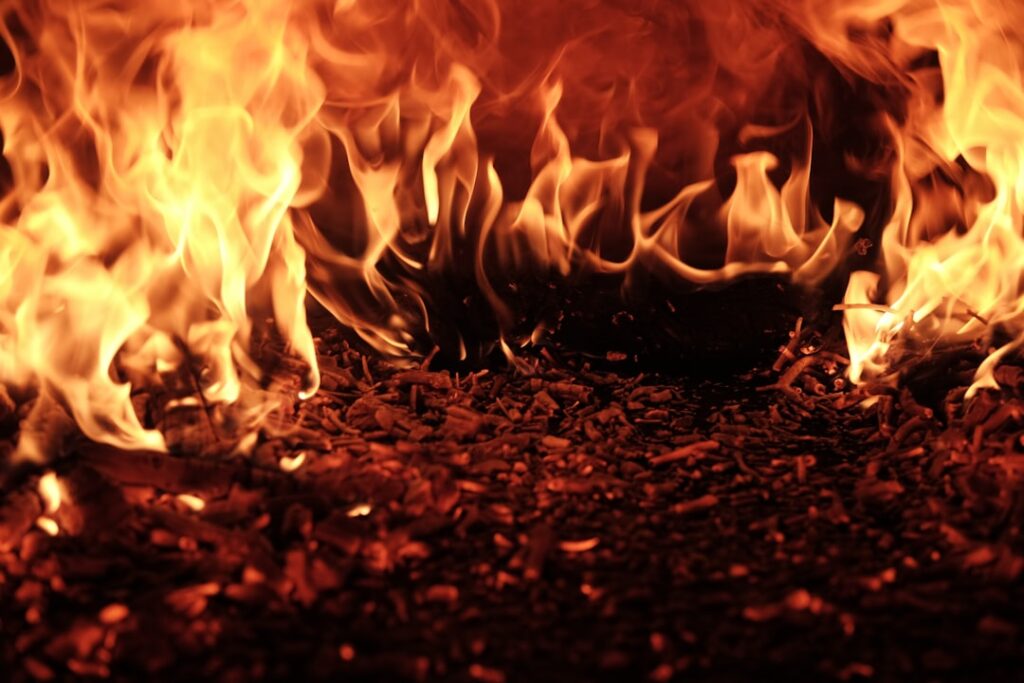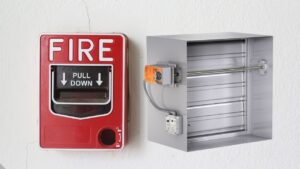Fire safety training is a crucial aspect of ensuring the safety and well-being of both employees and family members. Fires can occur unexpectedly and can have devastating consequences if not handled properly. By providing individuals with the knowledge and skills necessary to prevent fires, respond to emergencies, and protect themselves and others, fire safety training plays a vital role in minimizing the risks associated with fires. In this article, we will explore the importance of fire safety training, the risks of not having proper training, fire prevention strategies, the use of fire safety equipment, emergency planning and evacuation procedures, the role of smoke alarms and fire sprinklers, fire safety training for different settings, conducting fire drills and assessing risks, teaching fire safety to children and elderly family members, how to respond to a fire emergency, the benefits of regular training and refresher courses, and key takeaways from this discussion.
Key Takeaways
- Fire safety training is important for both employees and family members.
- Understanding the risks of fire and how to prevent them is crucial for fire safety.
- Knowing how to use fire safety equipment is essential in case of a fire emergency.
- Developing an emergency plan and evacuation procedures can save lives in a fire emergency.
- Smoke alarms and fire sprinklers play a vital role in fire safety.
The Importance of Fire Safety Training for Employees and Family Members
Fire safety training is essential for both employees in the workplace and family members at home. In the workplace, employees need to be aware of potential fire hazards and know how to prevent fires from occurring. They should also be trained on how to respond in case of a fire emergency, including evacuation procedures and proper use of fire safety equipment. Without proper training, employees may panic or make uninformed decisions during a fire emergency, putting themselves and others at risk.
Similarly, family members need to be educated on fire safety measures to ensure their own safety as well as the safety of others in their household. This includes knowing how to prevent fires from starting in the first place, as well as understanding what actions to take if a fire does occur. By providing fire safety training to family members, individuals can significantly reduce the likelihood of fires occurring at home and minimize the potential damage caused by fires.
Understanding the Risks of Fire and How to Prevent Them
Fires can be caused by a variety of factors, including electrical malfunctions, cooking accidents, smoking, heating equipment, and flammable materials. It is important to understand these common causes of fires in order to prevent them from occurring. For example, electrical fires can be prevented by ensuring that electrical systems are properly maintained and not overloaded. Cooking accidents can be avoided by practicing safe cooking habits and never leaving the stove unattended. Smoking should be done outside and away from flammable materials. Heating equipment should be regularly inspected and kept away from flammable objects. Flammable materials should be stored properly and kept away from heat sources.
In addition to these preventive measures, it is important to have fire safety equipment in place. This includes fire extinguishers, fire blankets, smoke alarms, and fire sprinklers. Fire extinguishers should be easily accessible and individuals should be trained on how to use them effectively. Fire blankets can be used to smother small fires or wrap around individuals to protect them from flames. Smoke alarms should be installed in every room of a building and tested regularly to ensure they are functioning properly. Fire sprinklers are an effective way to control fires and should be regularly inspected and maintained.
Fire Safety Equipment and How to Use Them
Fire safety equipment plays a crucial role in preventing fires from spreading and causing further damage. There are different types of fire safety equipment, each with its own specific uses. Fire extinguishers are designed to put out small fires by removing one or more elements of the fire triangle: heat, fuel, or oxygen. It is important to know how to properly use a fire extinguisher in order to maximize its effectiveness. The acronym PASS can help individuals remember the steps for using a fire extinguisher: Pull the pin, Aim at the base of the fire, Squeeze the handle, and Sweep from side to side.
Fire blankets are another type of fire safety equipment that can be used to smother small fires or wrap around individuals to protect them from flames. To use a fire blanket, individuals should first remove it from its container and hold it in front of them. They should then approach the fire slowly and gently place the blanket over the flames, making sure to cover the entire fire. Once the fire is smothered, individuals should leave the blanket in place until it has cooled down.
Other types of fire safety equipment include smoke alarms and fire sprinklers. Smoke alarms are designed to detect smoke and alert individuals to the presence of a fire. They should be installed in every room of a building and tested regularly to ensure they are functioning properly. Fire sprinklers are automatic systems that release water or other extinguishing agents when they detect heat or smoke. They are highly effective in controlling fires and should be regularly inspected and maintained.
Developing an Emergency Plan and Evacuation Procedures
Having an emergency plan and evacuation procedures in place is crucial for ensuring the safety of individuals during a fire emergency. An emergency plan outlines the steps that should be taken in case of a fire, including how to evacuate the building, where to meet outside, and who to contact for help. It is important for individuals to familiarize themselves with the emergency plan and know their roles and responsibilities.
When developing an emergency plan, it is important to consider the layout of the building and identify primary and secondary escape routes. Escape routes should be clearly marked and free from obstructions. It is also important to designate a meeting point outside where individuals can gather after evacuating the building. This will help ensure that everyone is accounted for and can be quickly identified by emergency responders.
In addition to having an emergency plan, it is important to conduct regular fire drills to practice evacuation procedures. Fire drills help individuals become familiar with the emergency plan and ensure that everyone knows what to do in case of a fire. During a fire drill, individuals should evacuate the building using the designated escape routes and gather at the designated meeting point. After the fire drill, it is important to assess its effectiveness and make any necessary adjustments to the emergency plan or evacuation procedures.
The Role of Smoke Alarms and Fire Sprinklers in Fire Safety
Smoke alarms and fire sprinklers play a crucial role in fire safety by detecting fires early and controlling their spread. Smoke alarms are designed to detect smoke and alert individuals to the presence of a fire. They should be installed in every room of a building, including bedrooms, living rooms, kitchens, and hallways. It is important to test smoke alarms regularly to ensure they are functioning properly. This can be done by pressing the test button on the alarm and listening for the sound.
Fire sprinklers are automatic systems that release water or other extinguishing agents when they detect heat or smoke. They are highly effective in controlling fires and can significantly reduce the amount of damage caused by a fire. Fire sprinklers should be installed in every room of a building, including bedrooms, living rooms, kitchens, and hallways. It is important to have fire sprinklers regularly inspected and maintained to ensure they are functioning properly.
Fire Safety Training for Different Types of Workplaces and Homes
Different types of workplaces and homes have unique fire safety needs that should be addressed through specific fire safety training programs. For example, offices may have different fire hazards than manufacturing facilities or restaurants. It is important for employers to assess the specific fire risks associated with their workplace and provide training that is tailored to those risks.
Similarly, different types of homes may have different fire hazards that should be addressed through specific fire safety training programs. For example, homes with wood-burning stoves may have different fire risks than homes with electric heating systems. It is important for individuals to assess the specific fire risks associated with their home and take appropriate measures to prevent fires from occurring.
Conducting Fire Drills and Assessing Fire Safety Risks
Conducting fire drills is an important part of fire safety training as it allows individuals to practice evacuation procedures and assess the effectiveness of their emergency plan. Fire drills should be conducted regularly, at least once a year, and should involve all individuals in the building. During a fire drill, individuals should evacuate the building using the designated escape routes and gather at the designated meeting point. After the fire drill, it is important to assess its effectiveness and make any necessary adjustments to the emergency plan or evacuation procedures.
In addition to conducting fire drills, it is important to regularly assess fire safety risks in order to identify potential hazards and take appropriate measures to prevent fires from occurring. This can be done through regular inspections of the building and its systems, as well as by conducting risk assessments. Risk assessments involve identifying potential fire hazards, evaluating the likelihood of those hazards causing a fire, and determining the potential consequences of a fire. By conducting regular risk assessments, individuals can identify areas of concern and take appropriate measures to mitigate those risks.
Fire Safety Training for Children and Elderly Family Members
Fire safety training is important for individuals of all ages, including children and elderly family members. Children should be taught basic fire safety skills from a young age, including how to prevent fires from starting, what actions to take in case of a fire, and how to use fire safety equipment. It is important for parents and caregivers to teach children about the dangers of fire and ensure they understand the importance of following fire safety rules.
Elderly family members may have specific needs that should be addressed through fire safety training. For example, individuals with mobility issues may require assistance during an evacuation or may need special equipment to alert them to the presence of a fire. It is important for family members to assess the specific needs of their elderly loved ones and take appropriate measures to ensure their safety in case of a fire.
How to Respond to a Fire Emergency and Stay Safe
In the event of a fire emergency, it is important to remain calm and take immediate action to ensure the safety of yourself and others. The first step is to activate the fire alarm or call for help. This will alert others in the building and notify emergency responders. If it is safe to do so, individuals should attempt to extinguish the fire using a fire extinguisher or fire blanket. However, it is important to remember that personal safety should always be the top priority. If the fire is too large or spreading rapidly, individuals should evacuate the building immediately.
When evacuating a building during a fire emergency, it is important to stay low to the ground in order to avoid smoke inhalation. Smoke rises, so the air near the floor will be clearer and easier to breathe. Individuals should crawl on their hands and knees, keeping their heads as close to the ground as possible. It is also important to feel doors before opening them. If a door is hot, it may indicate that there is fire on the other side and individuals should find an alternate route.
The Benefits of Regular Fire Safety Training and Refresher Courses
Regular fire safety training and refresher courses offer numerous benefits, including increased awareness of fire hazards, improved response during emergencies, and reduced risk of injuries and property damage. By providing individuals with up-to-date information on fire safety measures, training programs can help prevent fires from occurring in the first place. They can also equip individuals with the knowledge and skills necessary to respond effectively in case of a fire emergency.
Refresher courses are particularly important as they allow individuals to review and reinforce their knowledge of fire safety measures. They also provide an opportunity to learn about any new developments or changes in fire safety practices. By staying up-to-date on fire safety training, individuals can ensure that they are well-prepared to handle any fire emergency that may arise.
Fire safety training is a critical aspect of ensuring the safety and well-being of both employees and family members. By providing individuals with the knowledge and skills necessary to prevent fires, respond to emergencies, and protect themselves and others, fire safety training plays a vital role in minimizing the risks associated with fires. It is important for individuals to understand the common causes of fires and how to prevent them, as well as how to use fire safety equipment effectively. Developing an emergency plan and evacuation procedures, as well as conducting regular fire drills and assessing fire safety risks, are also important aspects of fire safety training. By teaching fire safety to children and elderly family members, individuals can ensure the safety of their loved ones in case of a fire. Finally, regular fire safety training and refresher courses offer numerous benefits, including increased awareness of fire hazards, improved response during emergencies, and reduced risk of injuries and property damage.
FAQs
What is fire safety training?
Fire safety training is a program designed to educate individuals on how to prevent fires, how to respond in case of a fire, and how to use fire extinguishers and other fire safety equipment.
Why is fire safety training important?
Fire safety training is important because it can save lives and prevent property damage. It can also help individuals feel more confident and prepared in case of a fire emergency.
Who should receive fire safety training?
Everyone should receive fire safety training, including employees, family members, and individuals who live in areas prone to wildfires.
What topics are covered in fire safety training?
Fire safety training typically covers topics such as fire prevention, fire extinguisher use, evacuation procedures, and how to respond in case of a fire emergency.
How often should fire safety training be conducted?
Fire safety training should be conducted on a regular basis, typically annually or whenever there are changes to the workplace or living environment that could impact fire safety.
Who is responsible for providing fire safety training?
Employers are typically responsible for providing fire safety training to their employees, while individuals are responsible for ensuring that their family members receive fire safety training.
What are some common causes of fires?
Common causes of fires include cooking accidents, electrical malfunctions, smoking, and arson.
What should I do if there is a fire?
If there is a fire, you should evacuate the building or area immediately and call 911. Do not attempt to put out the fire unless you have been trained to do so and have the appropriate equipment.









